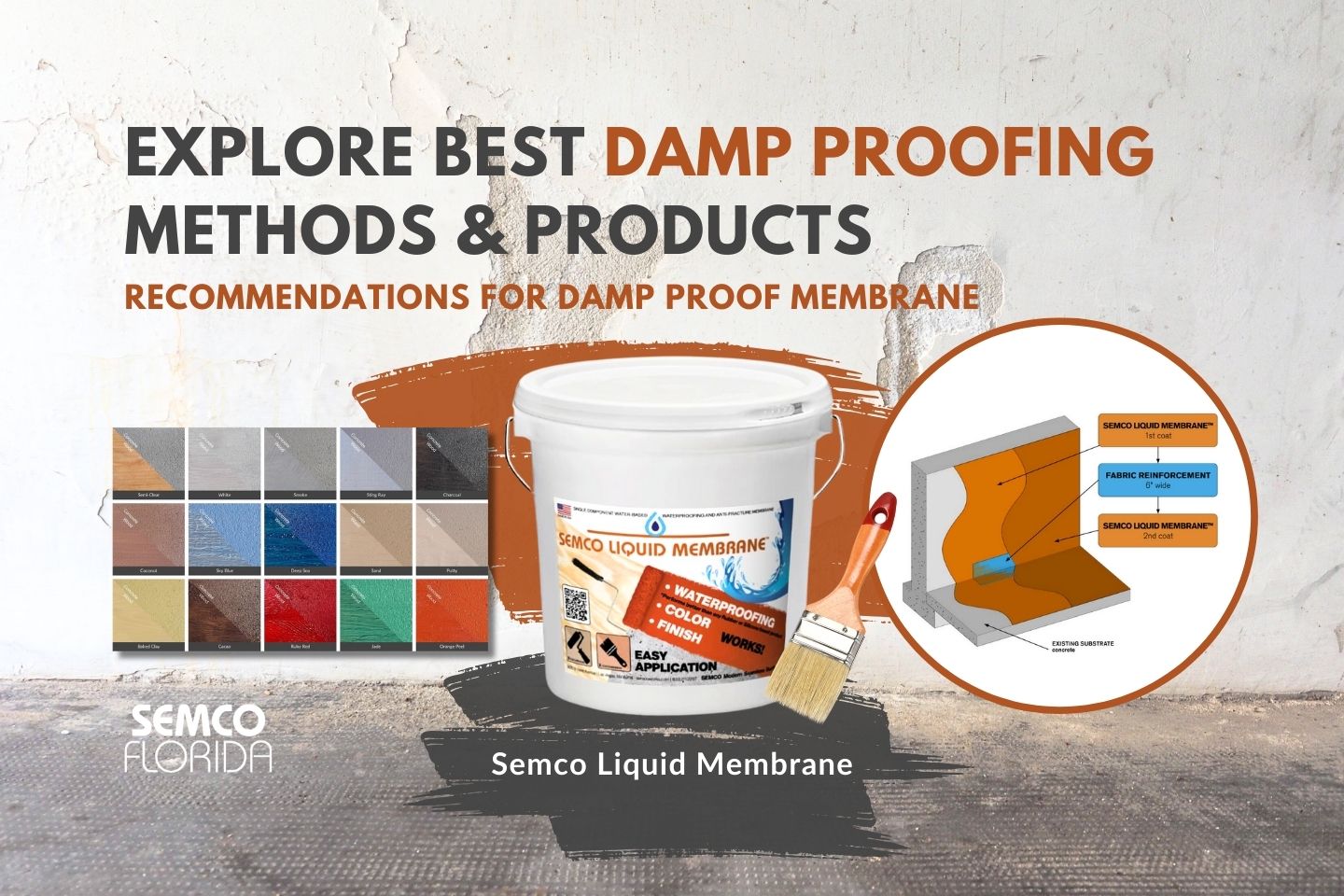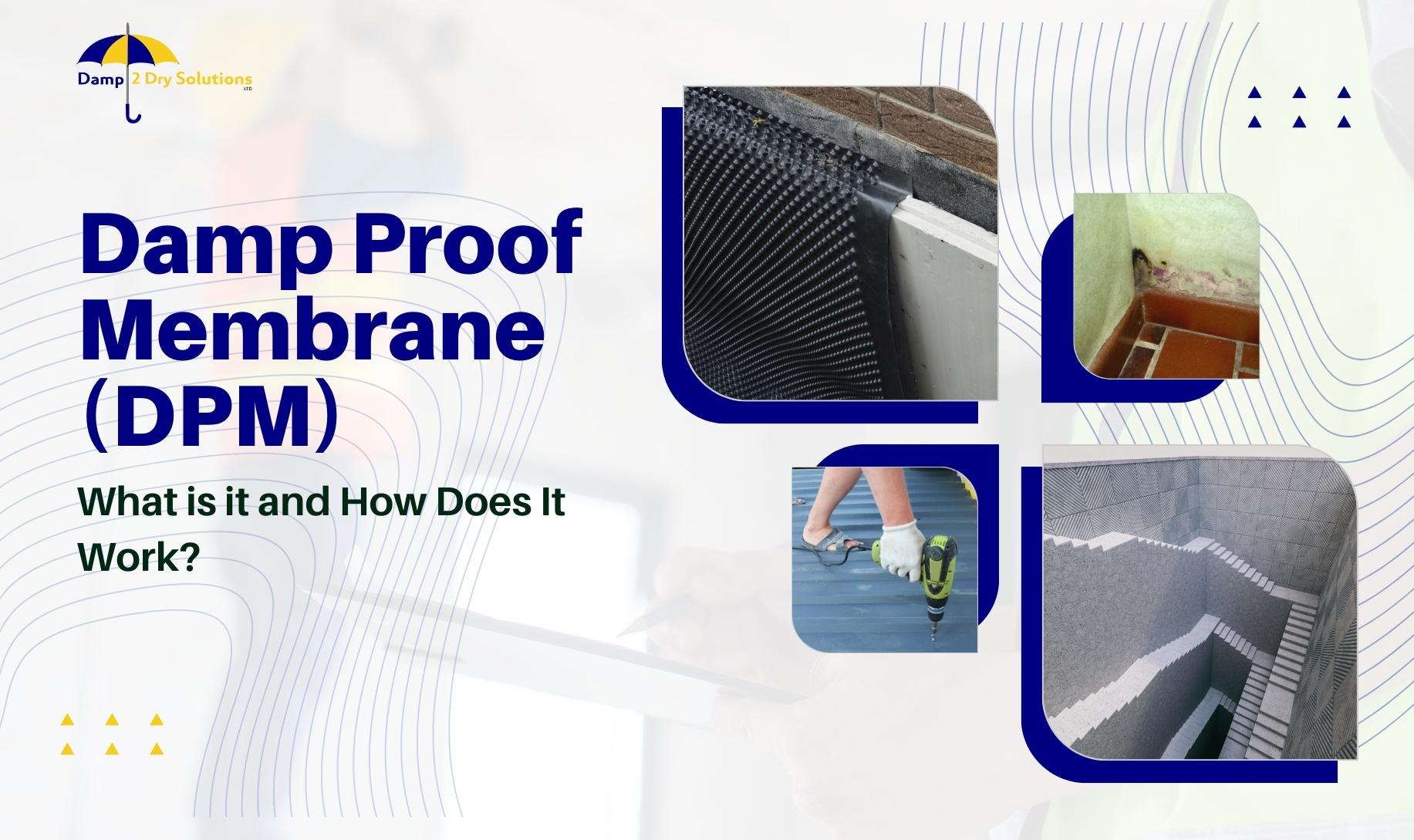Professional advice on dealing with rising damp from damp proofing newcastle
Professional advice on dealing with rising damp from damp proofing newcastle
Blog Article
Checking Out the Different Strategies and Solutions for Effective Damp Proofing
Dampness in buildings postures considerable challenges to both structural stability and interior air top quality. Numerous strategies and services have arised to fight this prevalent problem. From standard damp-proof membranes to cutting-edge chemical treatments, each technique offers special advantages. Understanding these alternatives is necessary for effective wetness control. Nevertheless, selecting the best remedy relies on specific structure problems and needs, triggering additional expedition right into one of the most reliable moist proofing methods readily available.
Comprehending the Reasons For Dampness
Moisture can occur from different resources, comprehending these causes is essential for reliable remediation. Typically, wetness stems from three primary resources: increasing damp, permeating damp, and condensation. Climbing damp happens when groundwater travels up with permeable products, such as brick or stone, commonly because of a lack of an efficient barrier (damp proofing newcastle). Penetrating damp is commonly triggered by exterior factors, consisting of roof covering leaks, damaged gutters, or damaged walls, permitting water to penetrate a building. Condensation, on the other hand, arises from excess moisture airborne, frequently aggravated by inadequate ventilation and temperature differences, leading to water beads forming on surfaces. Identifying these underlying problems is essential, as each kind of wetness requires a customized strategy for remediation. Correct evaluation aids in identifying one of the most reliable services, eventually guarding the architectural integrity of a structure and boosting interior air quality
Conventional Damp-Proof Membrane Layers

Chemical Damp-Proofing Solutions
Chemical damp-proofing options supply an innovative approach to stop moisture invasion in buildings. These techniques typically entail the application of liquid chemicals that permeate masonry and develop a barrier against rising wet. Generally made use of chemicals consist of silanes, siloxanes, and other water-repellent agents that react with surface products to produce a hydrophobic layer.The application process normally requires drilling openings right into the walls, injecting the chemical solution, and allowing it to cure. This approach is specifically useful for older frameworks where standard damp-proof membrane layers might be unwise. Additionally, chemical damp-proofing can be less turbulent and a lot more economical than considerable improvement projects.While efficient, these services rely on correct application and ecological problems for peak performance. Normal upkeep and monitoring are important to ensure the long life of the damp-proofing treatment. Overall, chemical damp-proofing stands for a functional choice for guarding buildings versus moisture-related damage
Dental Caries Wall Building And Construction Strategies
Tooth cavity wall surface building and construction techniques use numerous advantages, especially in dampness control and energy effectiveness. By including an air void between 2 layers of stonework, these walls efficiently minimize water access while improving insulation. This mix not only secures structures from dampness however additionally adds to decreased power intake.
Benefits of Dental Caries Wall Surfaces
When taking into consideration reliable moist proofing approaches, the benefits of cavity walls attract attention prominently. Tooth cavity wall surfaces are composed of 2 different layers, developing an air gap that effectively minimizes dampness infiltration. This design reduces the danger of dampness, as the outer wall functions as a barrier against rain and water ingress. Furthermore, dental caries wall surfaces improve thermal insulation, which contributes to power effectiveness by lowering heat loss. They additionally supply audio insulation, helping to produce a quieter indoor atmosphere. Furthermore, the air void allows for air flow, which helps in dampness control and reduces the probability of mold growth. These advantages not only boost the total comfort of a building yet additionally add to its durability and structural honesty.
Moisture Control Strategies
Efficient moisture control approaches are critical in tooth cavity wall surface building to assure long-lasting protection versus moisture. One key method entails the incorporation of weep holes, which assist in water drainage from the tooth cavity, protecting against build-up. In addition, the use of breathable membranes can assist handle moisture levels while enabling entraped vapor to escape. Proper positioning of insulation is additionally important, as check here it should not obstruct drain courses. Guaranteeing that the external fallen leaves of the dental caries wall are constructed with water-resistant products boosts overall resilience. Routine upkeep checks are necessary to determine any type of obstructions or damages early, guarding the structure's integrity. Ultimately, a combination of these strategies forms a robust defense against moisture invasion in tooth cavity walls.
Insulation and Energy Effectiveness
Insulation plays a crucial role in enhancing energy effectiveness within dental caries wall surface building. By incorporating protecting products, these walls produce a thermal obstacle that decreases heat loss and lowers power intake. Effective insulation not just assists preserve a steady interior temperature but also reduces the risk of wetness, as it prevents condensation within the wall surface dental caries. Various techniques, such as using inflexible foam boards or mineral woollen, can be utilized to achieve optimal insulation performance. Additionally, correct installment is essential to guarantee that spaces and spaces are minimized, which can or else jeopardize power effectiveness. Ultimately, a well-insulated dental caries wall surface adds significantly to total sustainability and reduces heating and air conditioning costs for house owners.
External Damp Proofing Techniques
External wet proofing methods are essential for securing structures from wetness seepage. Two efficient techniques include the application of waterproof membranes and the installment of French drains. These options help alleviate water buildup and protect the honesty of buildings.
Waterproof Membrane Layer Application
While various approaches exist for avoiding dampness ingress, the application of water-proof membranes continues to be an extremely effective exterior damp proofing method. These membrane layers are usually made from products such as polyethylene, rubber, or modified bitumen, supplying a durable obstacle versus water penetration. The setup procedure involves applying the membrane layer to the exterior surfaces of walls or foundations, making sure complete protection to protect against leakages. Proper adhesion and sealing at joints are vital to maximizing effectiveness. Water resistant membranes can be applied in various types, consisting of fluid finishings and sheet membrane layers, permitting adaptability based on the certain requirements of the structure. This technique not only secures structures from moisture however likewise enhances their long life and architectural honesty.
French Drainpipe Installment
One effective technique for taking care of groundwater and protecting against moisture accumulation around a structure's foundation is the setup of a French drainpipe. This drainage system is composed of a trench filled with gravel and a perforated pipeline that reroutes surface water away from the foundation. Appropriate setup needs careful planning, ensuring that the drainpipe slopes far from the structure to assist in ideal water circulation. Additionally, the place of the drain is important; it ought to be positioned in areas vulnerable to pooling or excess wetness. Regular maintenance, consisting of cleaning debris from the crushed rock and guaranteeing the pipe stays unhampered, is vital for long-term efficiency. Inevitably, a well-installed French drainpipe can considerably reduce the threat of water-related issues in foundations and basements.
Inside Waterproofing Techniques
Interior waterproofing strategies are crucial for securing a building's interior from moisture infiltration and possible water damage. These techniques normally entail the application of specific materials and techniques made to create a moisture obstacle within the structure. One usual method is making use of water-proof finishings or sealants on walls and floors, which stop moisture from permeating surfaces.Additionally, setting up indoor drainage systems, such as sump pumps, can effectively manage water buildup in basements and creep rooms. One more approach entails making use of vapor obstacles, which are set up to hinder wetness movement from the ground right into living spaces.Moreover, attending to any fractures or gaps in walls or foundations with appropriate sealers ensures a complete protection against water intrusion. By carrying out these interior waterproofing approaches, homeowner can considerably minimize the threat of mold and mildew growth, structural damages, and other moisture-related concerns. Proper implementation of these techniques is important for long-term protection and building integrity.
Normal Maintenance and Evaluation Practices
Regular upkeep and evaluation methods are essential for assuring the long-term performance of wet proofing options in any kind of building. Regular checks enable homeowner to determine very early signs of wetness invasion, such as peeling off paint, mold development, and stuffy smells. These indicators can signify underlying issues that call for prompt attention.Inspections must be carried out at least annually, concentrating on prone locations like basements, creep areas, and outside wall surfaces. Throughout these evaluations, building owners must check out sealers, drain systems, and ventilation to confirm they work correctly.Additionally, maintaining downspouts and rain gutters is crucial, as clogged up systems can bring about water build-up near the foundation. Carrying out a normal maintenance timetable, together with prompt repair services, can substantially prolong the life expectancy of wet proofing steps and protect the structural honesty of the building. Positive steps eventually add to the total wellness and security of the living setting.
Often Asked Concerns
Exactly How Lengthy Does Damp Proofing Usually Last?
The duration of damp proofing effectiveness varies, typically lasting in between 20 to 50 years. Elements such as application top quality, environmental conditions, and upkeep methods considerably affect the longevity of the damp proofing treatment.

Can I Damp Evidence My Home Myself?
The individual contemplated the expediency of do it yourself damp proofing. With proper research study and the appropriate materials, it is possible. Nonetheless, they likewise identified the value of professional support to assure lasting performance and stop future concerns.
What Are the Indicators of Ineffective Damp Proofing?
Indications of ineffective moist proofing include persistent stuffy odors, noticeable mold and mildew development, peeling off paint, damp patches on wall surfaces, and timber degeneration - mould removal newcastle. Homeowners should resolve these issues without delay to stop additional damage and wellness problems
Does Damp Proofing Affect Indoor Air Top Quality?

Just How Much Does Professional Damp Proofing Price?
Expert moist proofing expenses differ substantially, commonly varying from $1,000 to $5,000 depending on the building's size, the extent of the moist problem, and chosen approaches. Each circumstance calls for a tailored evaluation for exact rates. Typically, wetness stems from three main resources: rising damp, penetrating wet, and condensation. When considering effective wet proofing techniques, the benefits of tooth cavity wall surfaces stand out prominently. Exterior moist proofing approaches are important for safeguarding frameworks from dampness seepage. While different techniques exist for stopping moisture access, the application of waterproof membranes remains an extremely effective external damp proofing method. Signs of inefficient damp proofing include consistent musty odors, noticeable mold growth, peeling off paint, moist patches on walls, and timber degeneration.
Report this page